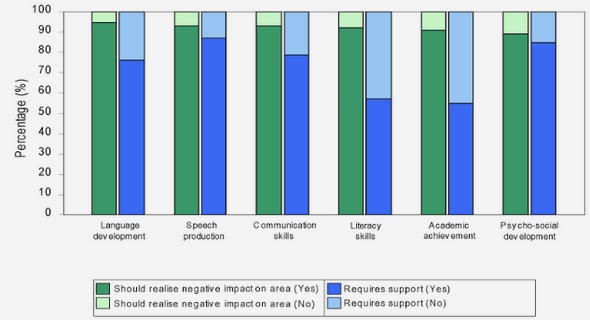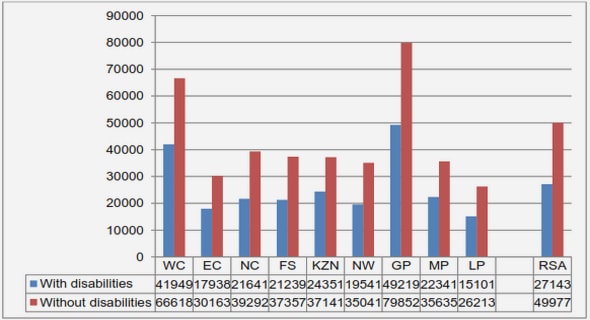Get Complete Project Material File(s) Now! »
Use of the CRISPR-Cas9 system to generate proscoop12 in Col-0 background
While a T-DNA mutation in PROSCOOP12 was available in the Wassilewskija (Ws) Arabidopsis accession, no mutation in that gene was available for Columbia (Col-0). In order to obtain a PROSCOOP12 mutant in Col-0 accession, we used the CRISPR-Cas9 approach to knock-out PROSCOOP12 in this accession. A guide RNA (gRNA) was designed to target the first exon of PROSCOOP12. Following transformation PROSCOOP12 was genotyped by sequencing for the presence of mutations. In one line we detected a single alanine (A) insertion within the gRNA binding sequence (Figure 8A). The resulting frame shift leaded to an early stop codon only 10aa downstream the editing event. To confirm the sequencing result a 450 base pairs (bp) long PCR product was digested with the restriction enzyme HaeII, which enzyme recognition sequence (RGCGCY) is disrupted by the CRISPR-Cas9-targeted mutation in PROSCOOP12. The PCR product could not be digested in proscoop12 confirming the sequencing results (Figure 8B). In the previously mentioned T-DNA mutant proscoop12 in the Ws background PROSCOOP12 was not transcribed (Figure 8C).
(A) The mutant in Col-0 (Columbia) background was created using the CRISPR-Cas9 approach. The guide-RNA was designed in the first exon. DNA of 15 proscoop12 mutants was extracted and sequenced. The alignment to the reference sequence (TAIR10) shows that proscoop12 has a single base insertion.
(B) A 450bp long fragment covering the guide-RNA sequence was amplified by PCR. The PCR product of Wt and proscoop12 DNA was digested using the restriction enzyme HaeII. (C) Confirmation of absence of transcription of PROSCOOP12 in the T-DNA knock-out line by RT-PCR in Ws (Wassilewskija). Actin2 expression (ACT2) is used as control.
PROSCOOP12 is involved in root development
Previous results on the AtPep/PROPEP peptide family, showed that this small peptide could play an important role in developmental processes. It was shown that AtPep1 perception might inhibit root growth via regulation of GLUTAMINE DUMPER (GDUs) genes encoding amino acid exporters (Ma et al., 2014), and second a publication uncovered an acceleration of starvation-induced senescence upon Pep perception (Gully et al., 2015). Based on these findings and the transcriptomic analysis that suggested PROSCOOP12 may play a role in root development, we compared the root length of wild type and proscoop12 plants. Indeed, proscoop12 plants developed significant longer roots than control plants in both accessions .
Root growth phenotypes were determined after 11 days. Wt plants were compared with proscoop12 in the two accessions Col-0 and Ws. Student’s t-test revealed that the different root length between wild-type and mutant is highly significant (***, P < 0.001).
The SCOOP12 peptide has the main features of DAMPs
The structural features of the PROSCOOP12 protein suggested that it should be classified as a secreted PTMP. However, at the functional level, its transcriptional behavior suggested that it may play a role as a DAMP. Indeed, the induction of PROSCOOP12 expression by a large panel of biotic stresses and the root phenotypes identified in proscoop12 revealed some analogies with the AtPROPEP1 and AtPROPEP2 genes which encode for the precursors of the AtPep1 peptide, a well-characterized DAMP (Bartels and Boller, 2015). Likewise, both genes are also induced by biotic stress (Huffaker et al., 2006) and the AtPep1 DAMP is involved in root development since the overexpression of PROPEP1 and PROPEP2 resulted in significantly longer roots (Huffaker et al., 2006). Therefore, we wanted to test if PROSCOOP12 encodes for a peptide that may act as a DAMP and compare it to AtPep1.
The SCOOP12 peptide induces immune responses in Arabidopsis
Based on the identification of the conserved motif 1 (Figure 6A), a putative mature peptide SCOOP12 was defined (PVRSSQSSQAGGR) and synthetized in order to explore its biological function. Despite the non-predictable post-translational modifications of the mature peptide, we tested the exogenous application of the synthetic SCOOP12 peptide as previously described for the CLE and RGF PTMP families (Matsuzaki et al., 2010; Murphy et al., 2012; Whitford et al., 2012). Treatment of plants with SCOOP12 induced a wide range of long- and short-term immune responses (Figure 10). One of the fastest defense responses is the production of ROS (Torres et al., 2006). We show here that SCOOP12 induced a more intensive ROS burst compared to AtPep1 but weaker than flg22 (Figure 10A). Next, we wanted to study the effect of SCOOP12 on genes closely linked to early defense mechanisms. The FLG22-INDUCED RECEPTOR-LIKE KINASE1 (FRK1) has previously been shown to be induced by pathogens, pathogen-derived elicitors and salicylic acid through MAPK (mitogen-activated protein kinases)-mediated signaling (Asai et al., 2002; Boudsocq et al., 2010) and AtPep1 (Flury et al., 2013).
Therefore, we wanted to test if exposure to SCOOP12 could influence FRK1 expression. Here, we measured FRK1 steady-state transcript levels in detached leaves floating for 2h in solutions supplemented with SCOOP12 or AtPep1. Compared to controls, AtPep1 and SCOOP12 treatments resulted in a 15-fold and 8.5-fold increase in FRK1 expression, respectively (Figure10B). The deposition of callose is known to be triggered by conserved PAMPs (Luna et al., 2011) as well as DAMPs such AtPep1. Callose staining after 24h of treatment with the elicitor peptides showed that SCOOP12 induced a callose deposition, yet at a weaker level compared to flg22 or AtPep1 (Figure 10C and 10D). One of the long-lasting defense responses is an inhibition of growth caused by the elicitor. The addition of MAMPs or DAMPs to the medium can lead to a strong inhibition of seedling growth in a concentration-dependent manner, which is dependent on the receptor-MAMP interaction (Krol et al., 2010). Our results indicate that perception of SCOOP12 also lead to an arrest of growth. The effect is comparable to the flg22 MAMP and the AtPep1 DAMP (Figure 10 EFG).
Table of contents :
1. Abbreviations
2. Summary
2.1. Résumé en français
3. General Introduction
3.1. MAMPs and DAMPs – defense inducing molecular signatures
3.2. Phytocytokines and small endogenous signaling peptides
3.3. Plant innate immunity
3.4. Defense responses induced during PTI
3.5. Systemic acquired resistance (SAR)
3.6. Defense priming – The third layer of defense?
3.7. Antisense transcription
3.8. The aims of this thesis
4. The SCOOP12 peptide regulates defense responses and root development in Arabidopsis thaliana
4.1. Abstract
4.2. Introduction
4.3. Results
4.4. Discussion
4.5. Material and methods
5. The SCOOP family contains several defense-response inducing peptides that can regulate root growth
5.1. Abstract
5.2. Introduction
5.3. Results
5.4. Discussion
5.5. Material and methods
5.6. Appendix: Are PROSCOOP genes under epigenetic control?
6. Biotic stress-induced priming and de-priming of transcriptional memory in Arabidopsis and apple
6.1. Abstract
6.2. Introduction
6.3. Results
6.4. Discussion
6.5. Material and methods
6.6. Appendix: Does BTH/flg22 application influence defense responses and Pseudomonas resistance in a long-time memory fashion?
7. General Discussion
7.1. The discovery of the SCOOP peptide family
7.2. Possible posttranscriptional modifications of the SCOOP family
7.3. The identification of the SCOOP receptor(s) – the next big challenge
7.4. Phytocytokines – peptides between defense and development
7.5. DAMPs and synthetic elicitors as plant defense stimulating compounds
7.6. Is a plant able to forget?
7.8. Conclusion
7.9. Outlook
8. Acknowledgements
9. References
10. Appendix: Scientific publication (Gully et.al., 2018 Journal of experimental botany)
11. Curriculum Vitae


